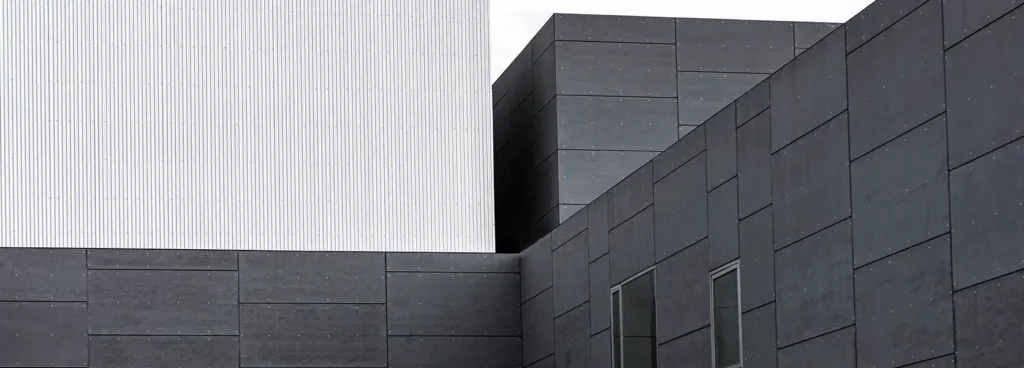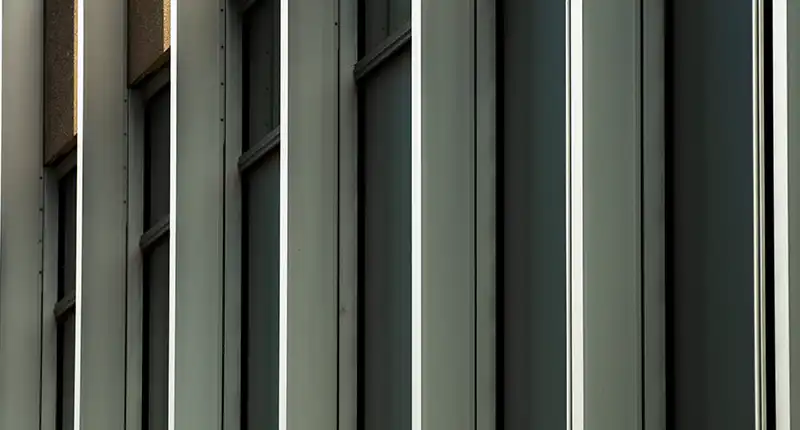
- New
- August 23, 2025
How to Choose the Right Fiber Cement Board for Your Project
In modern construction, material selection is everything. Among the most versatile and reliable materials available today, the fiber cement board stands out, especially for projects in demanding climates like the UAE. Known for its exceptional durability, resistance to fire and moisture, and design flexibility, it has become a go-to choice for architects, builders, and contractors.
However, not all fiber cement boards are created equal. With various thicknesses, densities, and intended uses available, selecting the right board is critical to ensuring the longevity, safety, and structural integrity of your project. Making the wrong choice can lead to subpar performance and costly future repairs.
This guide will walk you through the essential factors to consider when choosing the right fiber cement board, ensuring you select a product that perfectly matches the demands of your specific application.
At a Glance
- 1. Unmatched Durability in a Harsh Climate
- 2. Superior Fire Resistance for Enhanced Safety
- 3. Excellent Resistance to Moisture and Humidity
- 4. Versatility in Design and Application
- 5. A Commitment to Sustainable Construction
- Conclusion: Building for a Resilient Futurem
- Building with Confidence in the UAE
- Frequently Asked Questions (FAQs)
1. Start with the Application: Where Will It Be Used?
The single most important factor in your decision is the board’s intended application. The requirements for an external wall exposed to the elements are vastly different from those for an internal ceiling.
- Exterior Cladding & Facades: This is one of the most demanding applications. Boards used externally must offer superior resistance to weather, UV radiation, and temperature fluctuations. Thicker, high-density boards are typically required to withstand wind loads and provide sufficient impact resistance.
- Internal Walls and Partitions: For internal walls in dry areas, the focus may shift towards a smooth finish for painting, sound insulation properties, and impact resistance, especially in high-traffic commercial spaces.
- Ceilings: Boards for ceilings can generally be thinner and lighter, as they are non-load-bearing and not subject to impact. Here, a smooth, uniform surface for a clean finish is the primary concern.
- Wet Areas (Bathrooms, Kitchens, Laundries): In these areas, moisture resistance is non-negotiable. Choose a fiber cement board specifically engineered to repel water and prevent the growth of mould and mildew. Standard gypsum boards will degrade quickly in these conditions, but a high-quality fiber cement board will remain stable and durable.
Flooring and Mezzanines: When used as a substrate for flooring, the board must have high compressive strength and rigidity to support dead and live loads without flexing. Thicker, high-density boards are essential for these structural applications.
2. Determine the Correct Thickness and Density
Once you know the application, you can narrow down the appropriate thickness and density. These two specifications are directly linked to the board’s strength, durability, and weight.
As a general guideline:
- 4mm – 6mm: Ideal for internal ceilings and decorative paneling where structural strength is not the primary requirement.
- 8mm – 10mm: A common choice for internal wall partitions, offering a good balance of impact resistance and manageability.
- 12mm and above: Reserved for external cladding, flooring, and wall systems requiring high impact resistance and structural performance.
Always consult the manufacturer’s data sheets. Reputable suppliers like Geminite provide detailed technical specifications that outline the recommended applications for each board thickness, ensuring you meet performance standards.

3. Evaluate Key Performance Characteristics
Beyond physical dimensions, the intrinsic properties of the board are what guarantee its long-term performance. Look for clear specifications on the following:
Fire Resistance
In any building project, safety is paramount. Fiber cement is inherently non-combustible. Look for boards with a high fire-resistance rating (e.g., Class A1). This means the board will not contribute to the spread of fire, providing critical protection for occupants and property.
Moisture and Rot Resistance
The UAE’s high humidity makes this a crucial factor, even for internal applications. A quality fiber cement board is hydrophobic, meaning it resists water penetration, preventing rot, mould, and structural degradation over time.
Durability and Pest Resistance
One of the material’s greatest strengths is its resilience. It is immune to termite attacks and other pests that can damage wood-based products. It also resists warping, cracking, and swelling, leading to a low-maintenance solution with a very long lifespan.
4. Consider Finishing and Workability
The final look of your project is just as important as its structural integrity. The best fiber cement boards offer a smooth, uniform surface that provides a perfect base for paint, plaster, or other decorative finishes.
Consider how easily the board can be worked with on-site. While robust, modern fiber cement boards should be relatively easy to cut, drill, and install using standard tools. This ease of workability can save significant time and labour costs during the construction process.
5. Check for Quality and Certifications
Finally, always verify the quality of the product you are choosing. Reputable manufacturers invest in rigorous testing and adhere to international standards (like ISO and ASTM). Third-party certifications are your guarantee that the board will perform as advertised. Choosing a certified product from an established UAE manufacturer like Geminite ensures you are getting a board designed and tested for the specific challenges of the regional climate.
Conclusion: Making an Informed Choice
Choosing the right fiber cement board is a foundational decision that impacts the quality, safety, and durability of your entire project. By systematically evaluating the application, required thickness, performance properties, and manufacturer quality, you can confidently select a product that delivers a superior, long-lasting finish.
This informed approach not only ensures compliance with building codes but also provides peace of mind for years to come.
Planning your next project? Geminite offers a comprehensive range of high-performance fiber cement and calcium silicate boards manufactured in the UAE. Contact our technical team for expert advice and to find the perfect solution for your needs.
Frequently Asked Questions (FAQ’s)
1. What is the main difference between fiber cement board and gypsum board?
The primary difference is durability and water resistance. Fiber cement boards are made from cement, sand, and cellulose fibers, making them highly resistant to water, fire, and impact. Gypsum boards are made from gypsum plaster pressed between paper layers and are susceptible to water damage, making them unsuitable for wet areas or external use.
2. Can fiber cement boards be used for exterior cladding in the UAE’s heat?
Absolutely. Fiber cement boards are exceptionally well-suited for the UAE’s climate. They are dimensionally stable and do not warp or crack under intense heat. Their resistance to UV radiation, moisture, and humidity makes them a durable and low-maintenance choice for external facades.
3. How do I cut fiber cement boards?
They can be cut using a “score and snap” method with a special knife for thinner boards. For thicker boards or multiple cuts, a power saw fitted with a specific polycrystalline diamond (PCD) blade is recommended to ensure clean cuts and minimize dust. Always follow safety guidelines and wear appropriate PPE.
4. Are fiber cement boards environmentally friendly?
Many fiber cement boards are considered a sustainable building material. They are made from readily available materials and have a very long lifespan, reducing the need for replacement. Manufacturers like Geminite are often focused on sustainable production processes, including water recycling and using non-toxic components.
5. Do I need a special frame to install thicker fiber cement boards?
Fiber cement boards can be installed on standard wood or metal framing systems. However, for thicker, heavier boards used in external or structural applications, it is crucial to follow the manufacturer’s guidelines regarding frame spacing and fastener requirements to ensure the system can safely support the load.
At a Glance